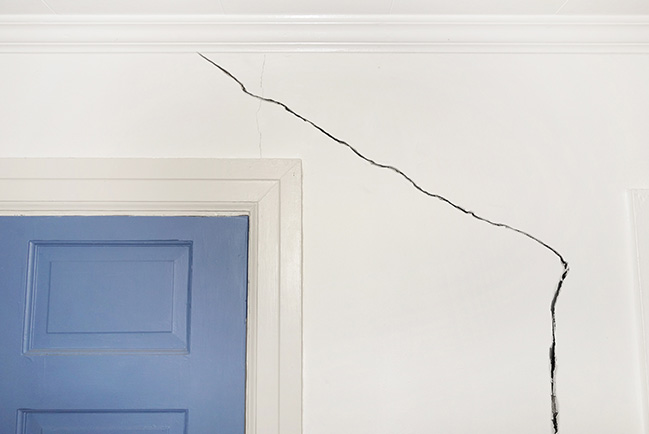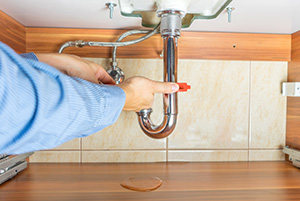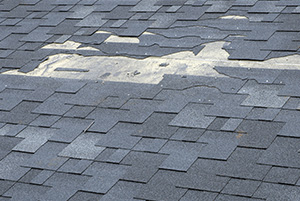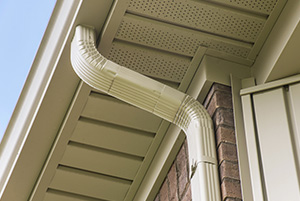Plumbing Tips for Preventing Foundation Problems
09/27/19

The leaves are starting to turn, the days are getting shorter, and pumpkin spice lattes are on the menu. Fall is officially here!
We know you’re excited about holiday plans and sweater weather, but don’t let this distract you from some important fall home maintenance, such as preventing foundation problems. The foundation of your home is the support structure for the entire building, keeping it straight, stable, dry, and comfortable. Over time, however, the foundation can shift, develop cracks, and ultimately deteriorate and fail.
Foundation problems are costly to correct. That’s why it’s important to take some time for plumbing maintenance to prevent foundation problems. While there are many things you can check yourself, we highly recommend scheduling an annual plumbing tune-up with a professional.
Plumbing Tips to Prevent Foundation Problems
-
Schedule Annual Professional Plumbing Maintenance

As emergency 24/7 plumbers with years of hands-on experience, we know that your plumbing can instantly become your highest priority. We also know that most of these emergency plumbing services could be avoided with yearly plumbing maintenance.
Plumbing leaks and water from faulty surface grading are the most common causes of foundation damage. A professional plumbing inspection will check for any plumbing leaks and drainage problems to prevent foundation problems from occurring.
Small leaks and cracks, when caught early, are cheap and easy to fix. Post-flooding cleanup, repair, and replacement, on the other hand, is extremely expensive and complicated. Save money and stress by scheduling annual plumbing maintenance with HELP Plumbing, Heating, Cooling and Drains.
Become a HELP Club Member and receive 3 annual tune-ups (AC, heating, and plumbing) and a few extra benefits as well.
-
Know the Signs of a Damaged or Leaking Sewer Pipe
If you’re able to recognize the symptoms of a main sewer line problem and call in a professional plumber right away, more expensive and extensive damage can be avoided. No one wants to deal with a complete sewer line replacement or foundation repairs, especially if it could have been avoided by knowing the warning signs of a damaged sewer line.
The mainline, also known as the main drain or main sewer line, takes all the way from your home and sends it to the sewer or municipal drain line.
Contact a professional if you notice any signs of a broken, leaking, or damaged mainline:
- Multiple clogs, blockages, or backups
- Sewer gas odors, either inside or outside the home
- Mold and mildew
- Multiple slow-flowing drains
- Extra lush spots of grass/landscaping, which can indicate an underground sewage leak nearby
- Sewage wastewater in the yard
- Rodent and pest problems
- Foundation issues, such as foundation cracks, foundation settlement, and sinkholes
Sewer mainline problems are a serious issue, since it endangers the plumbing for your whole house. The sewer line that runs from under your home to the municipal sewer system can become clogged or broken, resulting in a back-up that will first appear as clogs in sinks. If you notice a shower and sink clog at the same time, and if there is also a noticeable sewer smell from them, call for professional plumbers immediately before the broken line can cause extensive damage to your home’s basement or foundations.
Be on the lookout for these signs of a damaged main sewer line so you can call a professional plumber instead of having to deal with expensive and disruptive foundation repair. The sooner you detect and fix a broken mainline, the better.
-
Know the Signs of a Slab Leak
A slab leak is a plumbing leak that develops in the main supply line located beneath the concrete foundation. Sometimes, the water line is embedded into the slab itself. If you have a slab leak, the swelling of the surrounding area could cause foundation cracks and make your home vulnerable to pressure against the foundation. If you suspect a slab leak, contact a professional plumber as soon as possible.
Here are some signs that you may have a slab leak:
- Higher than normal water bills
- Damp areas on floor or carpet
- Signs of mold and mildew
- Hot spots on the floor
- Cracked tiles and waterlogged floors
- Decreased water pressure
- Sounds of constantly running water
- Foundation cracks and other foundation damage
Contact a professional plumber as soon as you suspect a possible slab leak. Finding and fixing plumbing leaks under your slab is probably the most important thing you can do to prevent foundation problems.
-
Check Your Roof

You don’t actually have to get on your roof, but for a more thorough inspection, this is probably necessary. If you have a pair of binoculars, you can probably get a good feel for the condition of your roof. Whether you climb up there and get a close look or have a more distant view, these are the things to look out for:
- loose or missing tiles
- cracks or damps spots
- damage where the roof meets the siding
- damage to your chimney, vents, dormers, and skylights
- wasps nests and other pests
If you don’t remember the last time you had someone professionally inspect your roof, you are probably due for one. Check and ask around for a quality roofing company to take care of your needs.
-
Clean and Inspect Gutters

Don’t forget to clean the gutters or hire a professional to do it for you. While you’re at it, check for any damaged flashing, disconnected gutters, or signs of water running down your walls. Make gutter repairs as soon as you find them and consider installing downspout extenders to direct the flow of water far away from the home.
But it’s not just the bottom of your home that can suffer. Clogged gutters can also lead to costly roof and gutter damage. When snow and precipitation accumulate on your roof, you need open gutters to properly divert the water off the roof. If gutters are clogged, roof and gutter damage are more likely to occur. Clogged gutters get heavy and can start to pull away from the home.
Lastly, clogged gutters attract pests, such as snakes, rodents, and insects. Mosquitoes in particular love stagnant water. Make sure you are cleaning your gutters at least two times a year, once in the early fall, and once in the late spring.
After you have cleared your gutters and downspouts, from a ladder, run the garden hose into your gutter system. The water should flow through the gutters and down the downspouts away from the home.
-
Inspect Your Foundation and Home Perimeter
We’re going to be seeing a lot of rainfall this fall and winter in the Cincinnati area. Heavy, wet soils can cause foundation cracks and shifting.
At least once a year, it’s a good idea to investigate your home for any signs of water leakage:
- Depressed or indented areas around the foundation that collect water.
- Any driveways, patios, stoops, walkways, or ground that sloped toward the house. You can use a level to check the direction and angle of the slope.
- Any clogged drains, especially sump pump and basement floor drains. Clear away any debris so water can flow freely. If water is backing up in any of your drains, contact a professional plumber.
- Disconnected downspouts, splash blocks, and downspout extenders. Make sure your downspouts and splash blocks are directing water away from the foundation. Consider adding downspout extenders to get the water further away from the home.
- Consult with a tree and landscaping expert before planting new trees and gardens. Be on the lookout for any rotting trees near the foundation.
- If you do use mulch around the home, keep it at least 2 feet away from any structures. Wood that is in contact with the soil and your foundation is a major risk for termites.
- Keep all old leaves and decomposing debris away from the house. Maintain as large a buffer between landscaping and the home as possible.
In the unfortunate event that your home floods, go over these safety tips for reentering your flooded home from the CDC.
-
Inspect and Maintain Your Sump Pump
A sump is a hole that is dug in the lowest part of your home to help collect water that has accumulated around your home. The pump is designed to remove that water.
If your home experiences frequent flooding, a sump pump is a great way to automatically discharge that water outdoors. If you already have a sump pump, make sure you are following the manufacturer’s recommended maintenance schedule. This usually includes cleaning out any debris from the sump, checking the power cord, and dumping a bucket of water in the sump to make sure the pump turns on. Check the owner’s manual for specific instructions or call your local plumber.
One thing you want to double-check is that the discharge line is properly draining away from the home and foundation. Usually, the discharge line leads to an outdoor drain. Make sure the water is being released at least 10 feet away from the home and foundation.
For help getting your home ready for winter, contact the experts at HELP Plumbing, Heating, Cooling and Drains. We can fully inspect your heating and plumbing systems to make sure they are running safely and efficiently all year long.
Contact us at (513) 333-4357 for all your plumbing and HVAC needs in Cincinnati, Northern Kentucky, and West Harrison, Indiana.
Posted in: Plumbing
Learn More!
Offer Expires Soon




